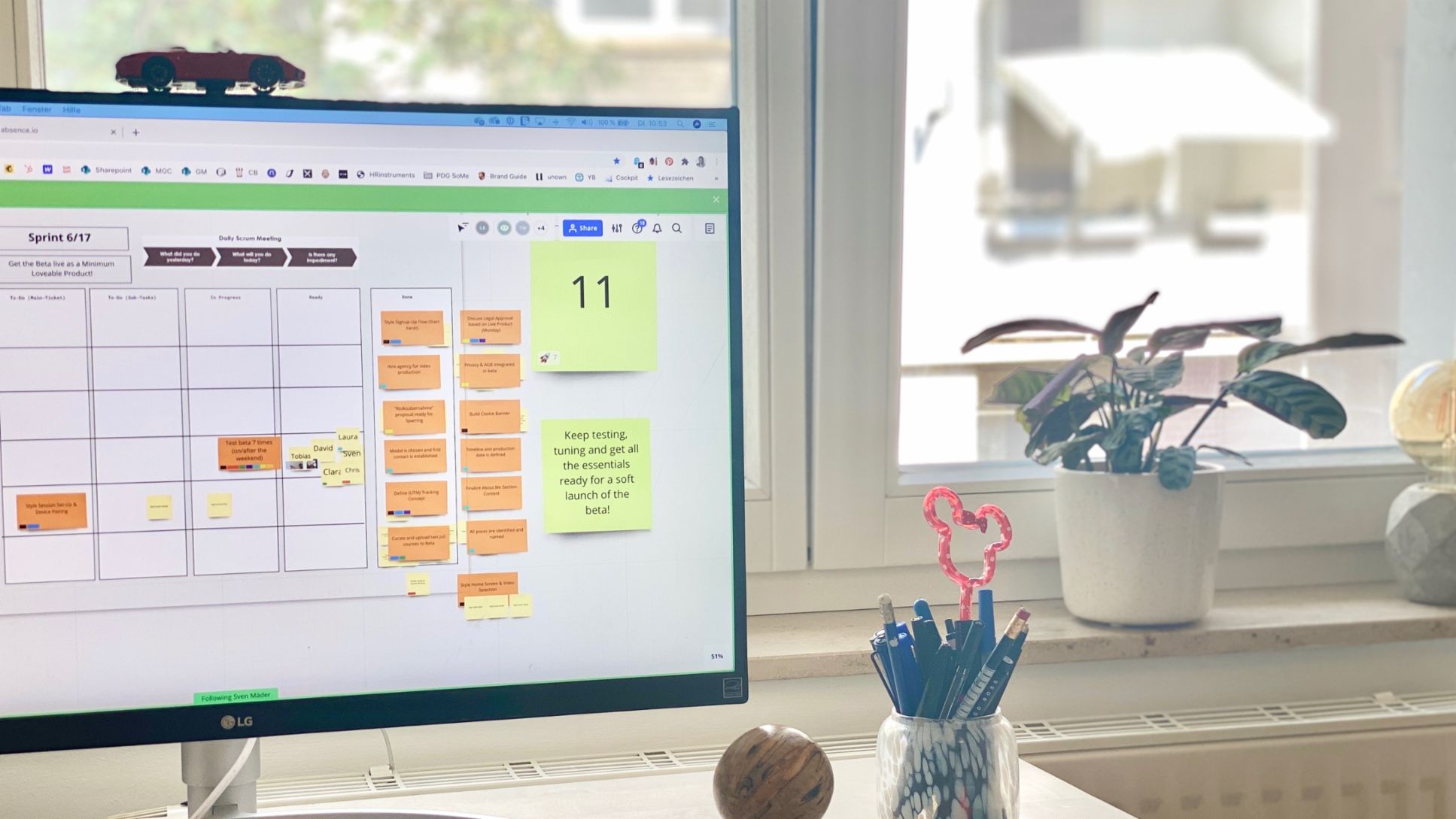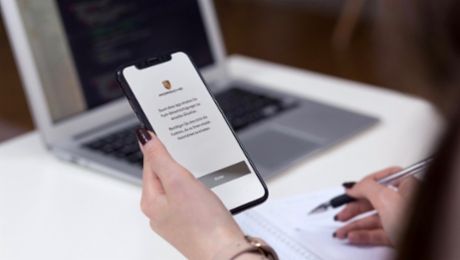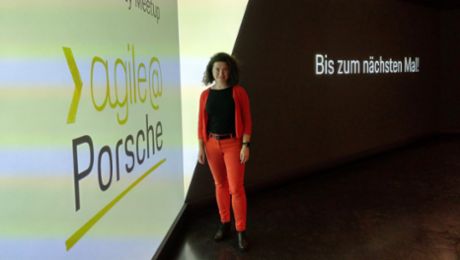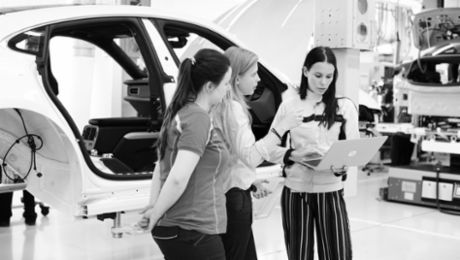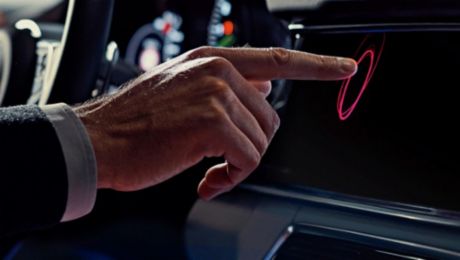Usually, our office here in Ludwigsburg offers us a place for inspiration, creativity and productivity. Walls full of sprint boards, countless colourful post-its on product fields, a prototype here and there and many collections of past brainstorming sessions.
Most importantly, however, what brings the office to life are my coworkers, who walk in every day with a spirit that is truly contagious and makes you want to do great things.
In my role, I usually work on multiple different projects at the same time. My tasks vary a lot which is truly exciting. Everything is in constant motion and progress — and communication and collaboration, as well as cross-functionality, are key.
Switching to remote work
The shift to remote work due to the outbreak of COVID-19 didn’t necessarily hit us offhand. We have already used some of the tools before the pandemic, but like everyone else, we were not quite prepared to work physically apart for several months. I am still impressed by how the teams took the official announcement on our working mobile from home situation. That day, which also marked the last day at the office, I watched teams come together for quick spontaneous meetings to discuss what needs to be put into place to successfully continue our work togetherbefore we all head home for the upcoming weeks — or as it turned out months.
If someone had asked me back then if I can imagine working mobile from home each and every day would be something I could see myself do or even like, I would have most likely said no.
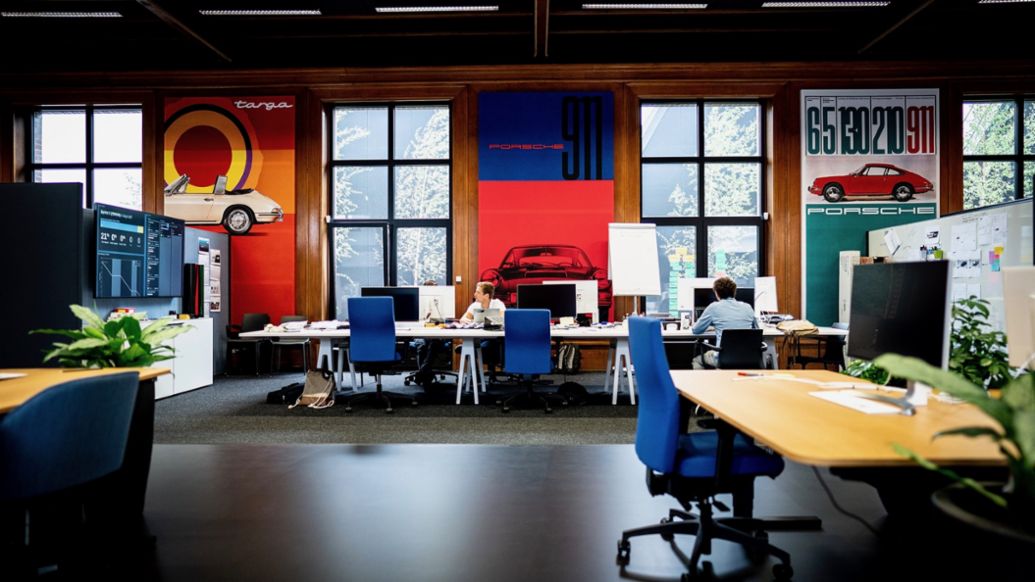
Now, over four months later, I want to share some things I learned and that also surprised me by working remotely full time:
1. Keeping the team close
Collaboration is one key aspect of our working culture. To embrace that, we usually work on benches. That means all members of a project sit together and work alongside. It’s not supposed to be a meeting, where we discuss specific topics, but more of a collaborative working environment. We learned that actually being close to each other promotes the exchange of knowledge, questions and discussion thanks to the short distance and casual atmosphere. So how could this possibly work when we’re not physically together? On day one, a coworker of mine came up with the idea of creating a “virtual bench”.
The first person to turn on their laptop in the morning started a Microsoft Teams Meeting and everyone could join in as they felt. Having people pop in and out, because of other meetings, was completely normal. At first, I wondered if we will all actively work together and started imagining some sort of chaotic atmosphere with everyone talking at the same time and nobody getting any work done. I quickly learned that it was nothing like that.

We recreated our typical small talk situations such as arriving at work in the morning, checking in on peoples’ weekend plans and of course making sure everyone was doing okay. I am a very caring person and bring a lot of empathy to the workplace. Knowing my coworkers are doing well is important to me and often something you wouldn’t know if you don’t see them or briefly talk to them. Our virtual bench created a space for working together just as much as it gave us all a chance to talk about what’s on our mind and how we cope with the whole COVID situation. I believe this was just as important of an exchange as project-related topics. We all got into a groove in working at our new “bench”. We could easily pop questions or just listen to conversations of others. This way of working still gives you a feeling of belonging, staying informed and you can ask questions whenever they cross your mind.
I used to spend most of my day on the bench unless I was in a meeting. Often I just silently worked on my own tasks and enjoyed the background conversations and learned a new thing here and there.
Since then, we further developed different formats to work together on our projects. I believe it’s very important to create new routines, which involve the whole team.
It turned out to be exactly what I needed to transition from my office routine to working mobile from home.
2. Digital workspaces improve transparency
When working in project groups, transparency is key. At the office, there was a lot of exchange at our bench about anything project related. On top, we used the physical walls around us to put our sprint board up and hang up all things important for our project. This could be anything from our product field, research results, competitive findings, a map of how we feel or brainstorming areas. This way, everyone within the team stayed informed, but we also signalized “an open door” towards everyone else who is interested in what we are currently working on, our progress and results.
When we left the office in March, we took pictures of everything on our walls to basically digitize it. Although we uploaded all of them to our Teams channel, we had to admit after a few days, that it is just not the same. It wasn’t as prominent anymore as you had to actively look into the files and open each of them individually. In addition to that, other colleagues did no longer have a chance to see what was going on in other projects.
Then we came across what has now become one of our most valuable tools that I personally cannot imagine working without anymore. We started using a digital whiteboard. In our case we chose Miro. It’s our digital whiteboard that contains everything project-related all in one place. You can easily draw mind-maps, project plans and of course, we integrated our sprint board, which works really well with our way of working as a team. You can connect it to other tools, which makes our collaboration easier. Many workshops have been entirely done with this tool, that allows all participants to collectively work on specific topics. There are post-its, timers, options to do a quick survey — the list of possibilities of what can be done within Miro is endless.
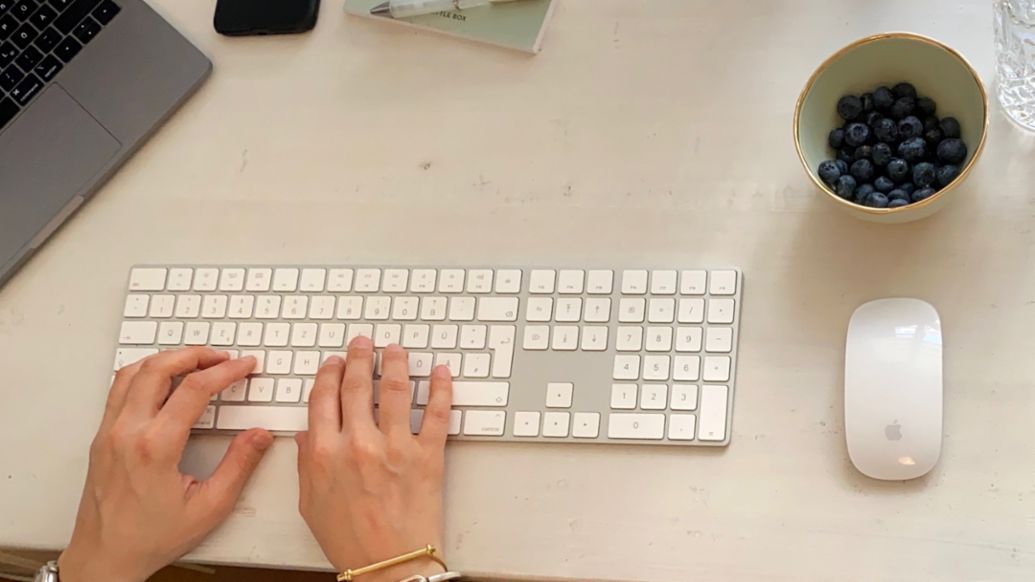
It’s definitely a tool we will keep in the future as it really makes a difference. It became the centrepiece of our work on our projects. All boards are visible to everyone within the organisation. You can pop into any board and see what the team is up to. It almost feels as if you stroll by different areas in the office.
To sum up, tools like this make our work and single projects more transparent than ever as everyone can access them at any time.
3. Good hardware is just as important as software
I love my laptop, but the thought of having to hunch over my laptop all day every day didn’t sound like something I would want to do for more than a few days. I realized a separate monitor would be something I definitely needed in order to work efficiently and keep up productivity. Our IT was amazing and provided us with everything we needed. After only a single day on my laptop, I was fully equipped with a large separate monitor, a keyboard and a mouse.
I knew I needed a dedicated working area so I created my personal version of a “true home office”. In the beginning, my hallway had to make due, now I actually moved to a larger apartment for other reasons and have the luxury of a separate additional room that I turned into my office space. I even bought a desk calendar which, ironically, I would have never been able to use back at the office, because we didn’t have our own dedicated desks.
In our office, we have a sharing desk concept, so I was able to decide every day where I would like to sit that day. It worked very well for us, so I could see more companies switching to that kind of flexible office concepts, especially when enabling hybrid working models instead of insisting on physical presence.
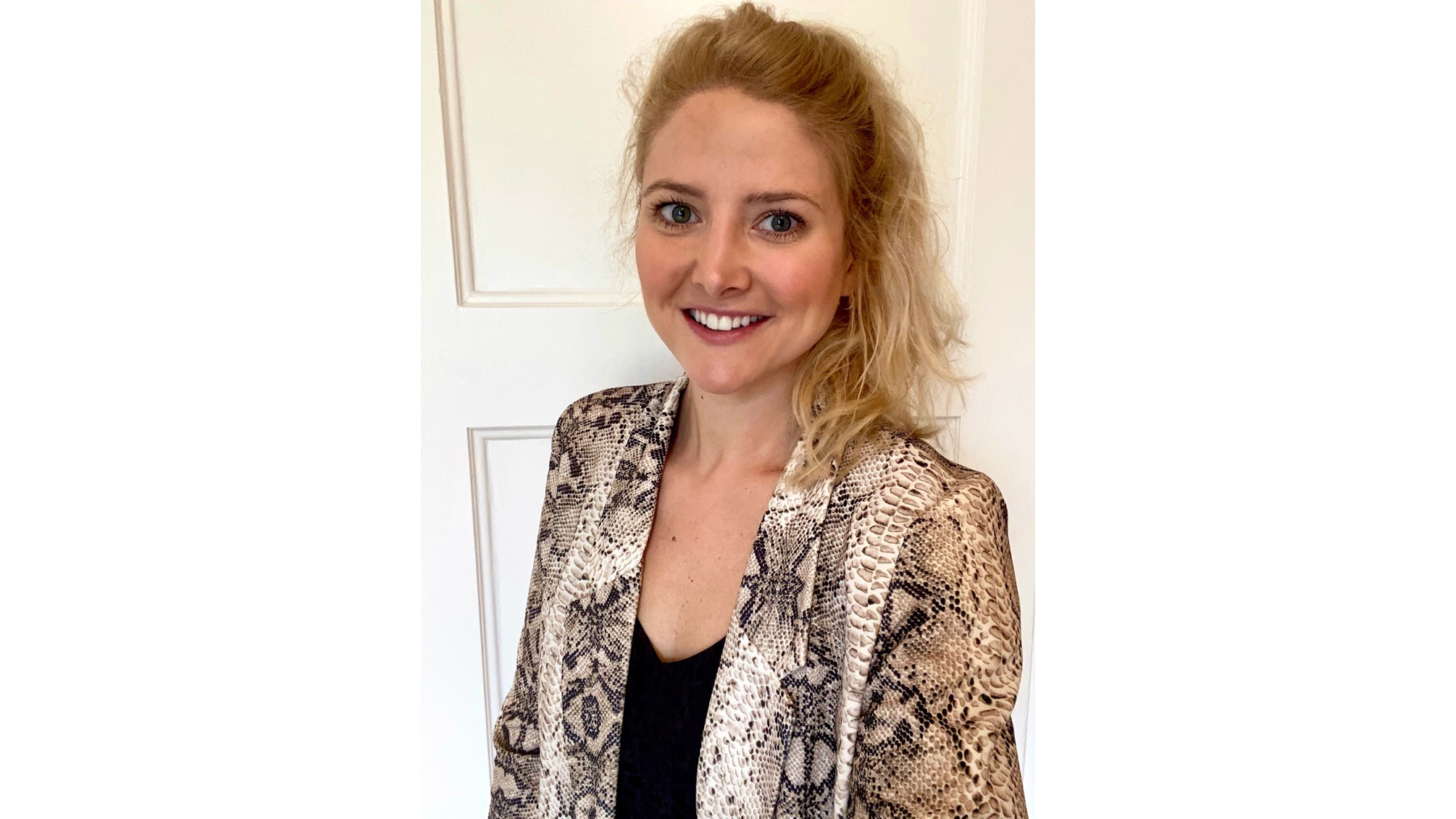
4. Motivation and productivity can spark everywhere
In the beginning, I was a bit concerned, if I can keep up my motivation. I live all by myself and I’m a people-person and love the atmosphere in the office where I’m surrounded by the daily hustle and bustle of my coworkers. I love to be surrounded by people, I’m pretty chatty and usually by talking to others about new ideas and ways of working on something, I get excited and hooked. How can I keep up that motivation and how important is a change of scenery for my productivity and creativity?
Personally, I was surprised how well being home worked out for me after a few days of adapting. Nobody chose for this pandemic to put us all in this new situation, so my coworkers and I realized that it’s not only about making this work but also embracing a chance we are given — an opportunity to show that working mobile from home more than a day a week or so can actually be a possibility for the future. Could we perhaps shape the future of our workplace? Sometimes things don’t go quite as planned, but I believe that there is always a chance to walk out of pretty much any situation having learned something.
We knew right away that this is the time for us to prove that we are a truly digital organization that can be productive from anywhere.
It was an inner drive as nobody doubted productivity would suffer. We simply wanted to take this chance, shift gears and be more productive than ever. This alone boosted our motivation so much that we developed such an ambitious inner drive and pushed each other to give it our all.
I’ve been feeling a much different and stronger connection to my coworkers since we started working mobile from home. Actually, I feel that our exchange and alignment became way more than before. Besides all the tools, we integrated short daily meetings, where everyone gives a short overview of their current tasks and reports if there are any dependencies or bottlenecks. I’m still amazed at how great and smooth everything works out.
How will the future of work look like?
I think right now we cannot really tell how we will work in the future, but I am convinced that this is the time to find new models and figure out what works for each and every company. Being pretty much forced to work this way as this was the only acceptable option in this situation, we should now learn from this experience. — as a company, as teams, and of course as individuals. My learning curve on what I am capable of, what I need to perform well, but at the same time what it is that I am comfortable with, has been immense.
My coworkers and I can definitely say that we would like to keep some of the tools and routines that we established during full-time remote work. Slowly the first people go back to the office for a day or two a week, but going back to how it was might never be our new “normal”.
I’m really curious about how the concept of “going to work” will change in the future. I am sure, however, that we were just given a rather involuntary first taste of what might be our new and hopefully even better “normal”. So let’s embrace it!
Info
Text published by Laura Simina, Senior Marketing Manager at Porsche Digital.
